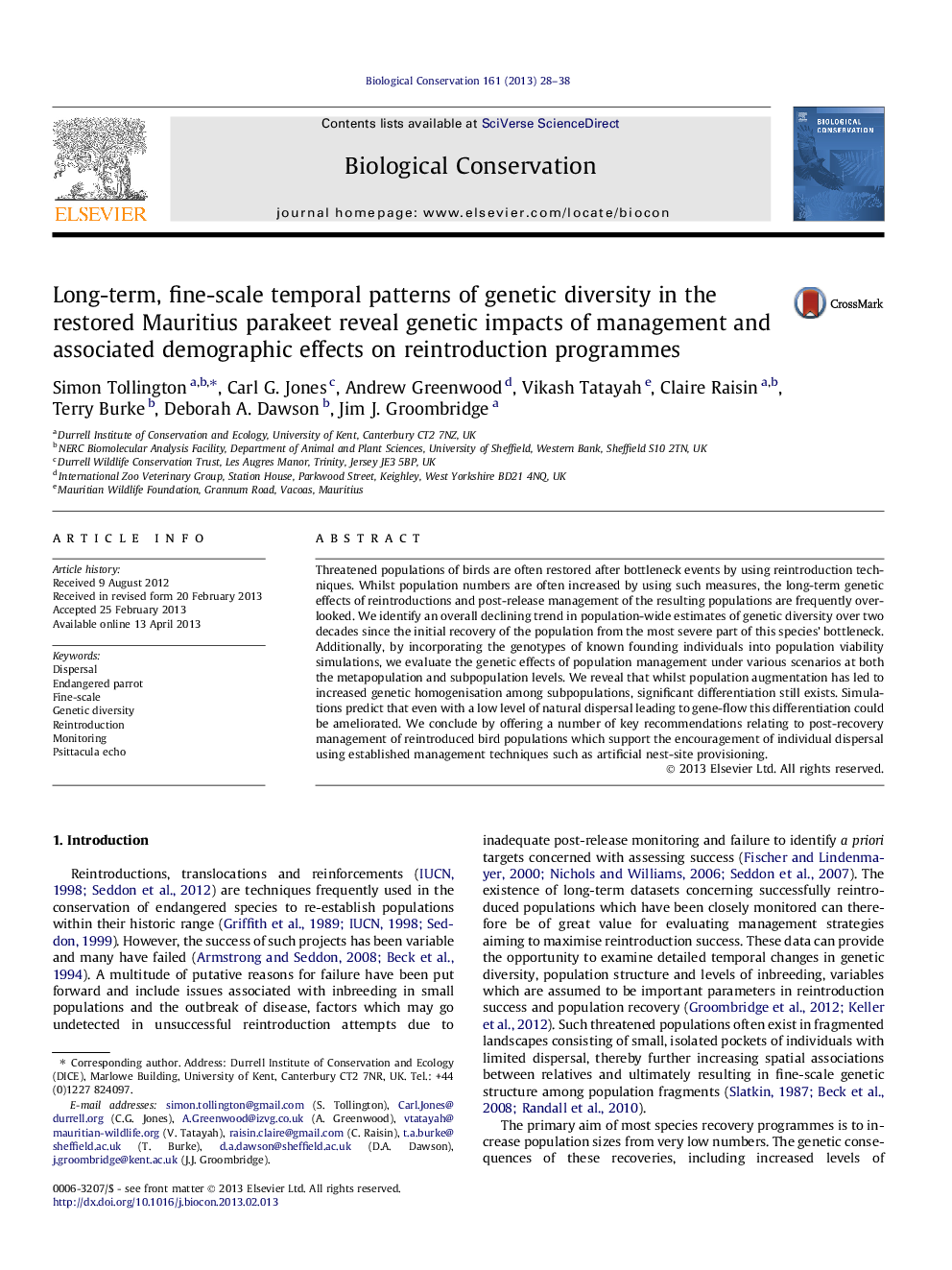| Article ID | Journal | Published Year | Pages | File Type |
|---|---|---|---|---|
| 6300701 | Biological Conservation | 2013 | 11 Pages |
Abstract
Threatened populations of birds are often restored after bottleneck events by using reintroduction techniques. Whilst population numbers are often increased by using such measures, the long-term genetic effects of reintroductions and post-release management of the resulting populations are frequently overlooked. We identify an overall declining trend in population-wide estimates of genetic diversity over two decades since the initial recovery of the population from the most severe part of this species' bottleneck. Additionally, by incorporating the genotypes of known founding individuals into population viability simulations, we evaluate the genetic effects of population management under various scenarios at both the metapopulation and subpopulation levels. We reveal that whilst population augmentation has led to increased genetic homogenisation among subpopulations, significant differentiation still exists. Simulations predict that even with a low level of natural dispersal leading to gene-flow this differentiation could be ameliorated. We conclude by offering a number of key recommendations relating to post-recovery management of reintroduced bird populations which support the encouragement of individual dispersal using established management techniques such as artificial nest-site provisioning.
Related Topics
Life Sciences
Agricultural and Biological Sciences
Ecology, Evolution, Behavior and Systematics
Authors
Simon Tollington, Carl G. Jones, Andrew Greenwood, Vikash Tatayah, Claire Raisin, Terry Burke, Deborah A. Dawson, Jim J. Groombridge,
